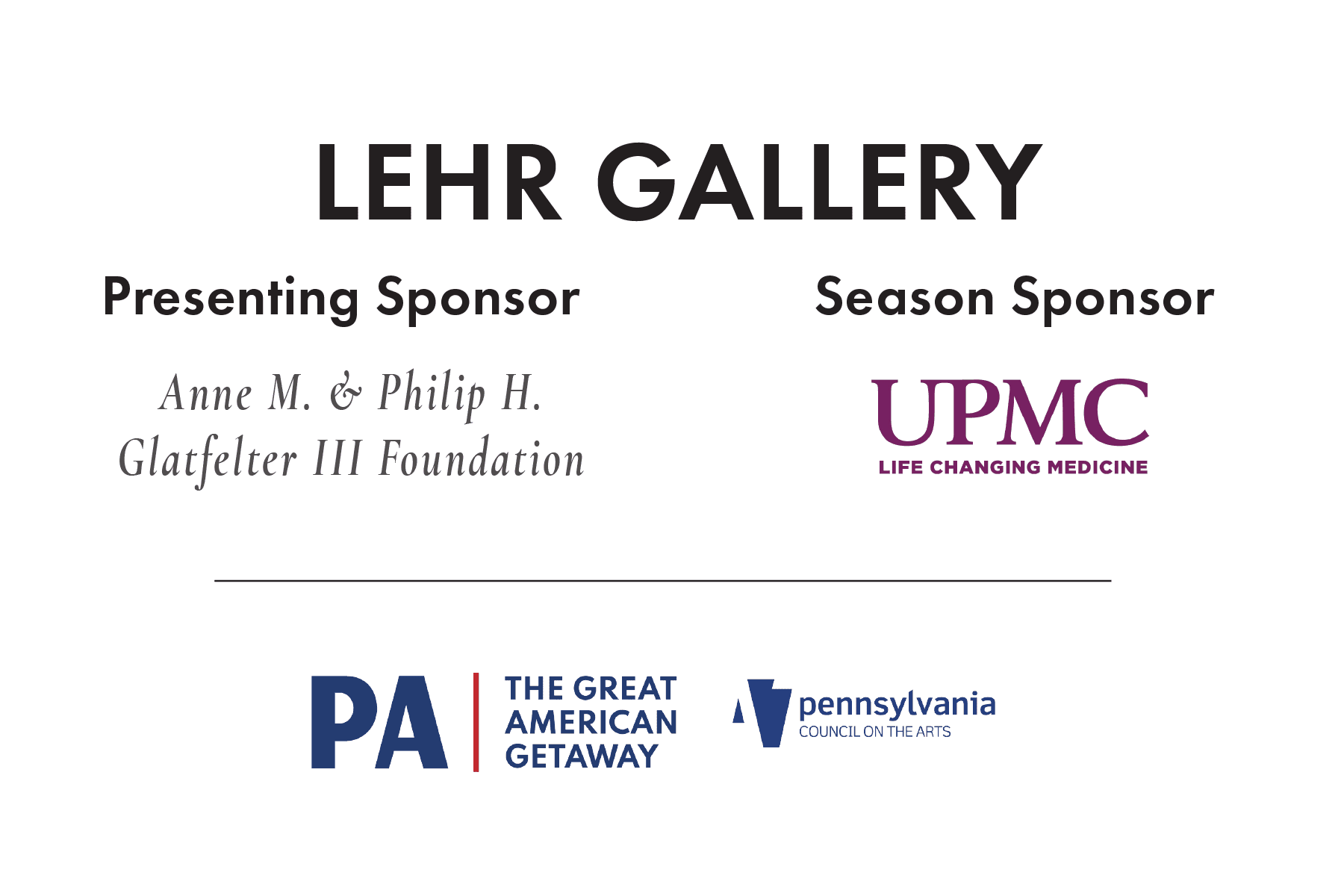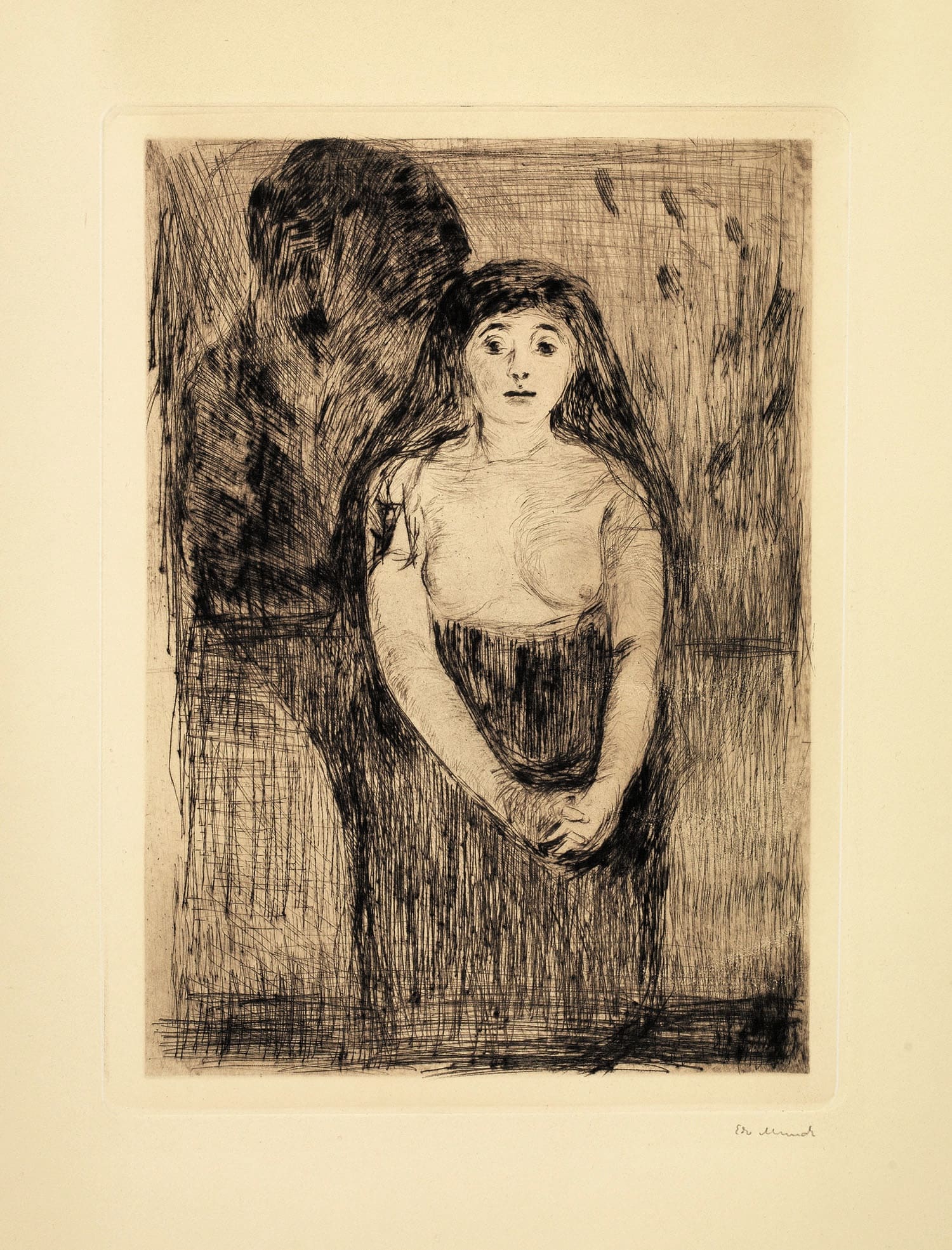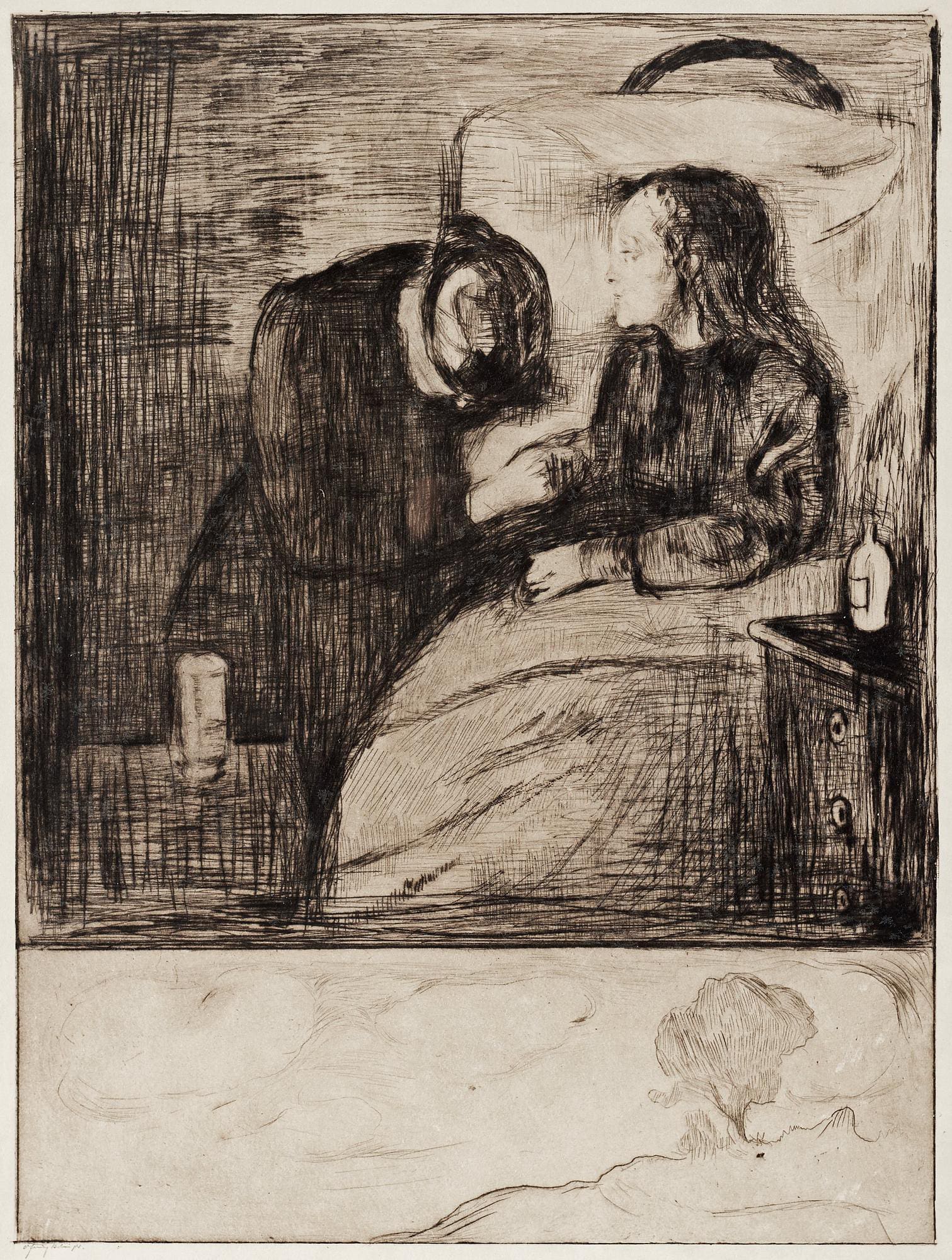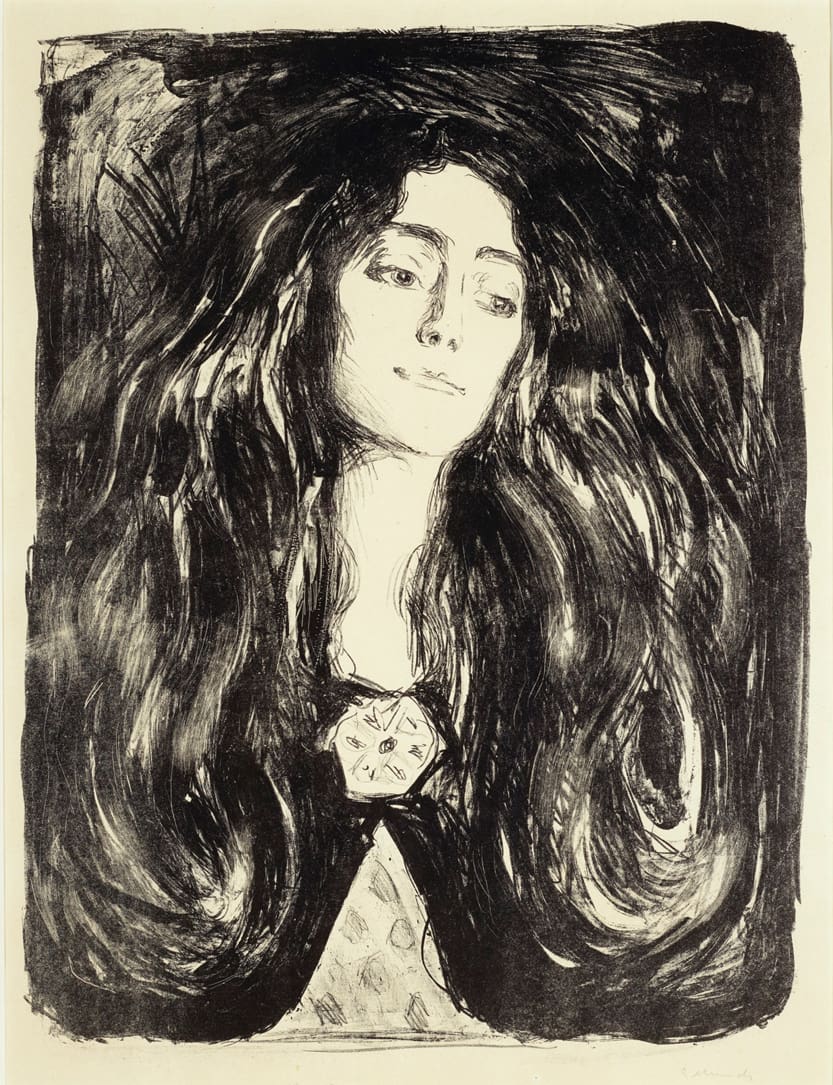EDVARD MUNCH: WORKS ON PAPER
Edvard Munch: Works on Paper features a selection of etchings, lithographs, drypoint, charcoal, and woodcuts from the iconic Norwegian painter and printmaker. A recognized forerunner of Expressionism, Munch is primarily known for his Symbolist paintings, none more instantly recognizable than The Scream. This intimate exhibition instead delves into the artist’s visceral, fevered mark-making and richly textured compositions. Preeminent artworks on display include impressions of The Sick Child, Eva Mudocci, and Two human beings. The lonely ones.
GETTY RECORD
Munch, one of the most noted Norwegian artists, was concerned with the expressive representation of emotions and personal relationships in his work. He was associated with the international development of Symbolism during the 1890s and recognized as a major influence on Expressionism. His early work was conventionally naturalistic; by 1884, he belonged to the avant-garde circle of the painter Christian Krøhg. During stays in Paris between 1889 and 1892 Munch was influenced by the symbolists, van Gogh, and, above all, Gauguin; it was during this time that he established his characteristic nervous linear style. An exhibition of more than 50 of Munch’s work at the Berlin Kunstlerverein (Artists’ Union) in 1892 was so scandalous that it was closed after a week with the repercussions leading to the formation of the Berlin Sezession in 1899. Much of the next ten years was spent in Berlin associating with writers such as Richard Dehmel and August Strindberg and creating works featuring his recurrent themes of sexual awareness, illness, jealousy, and insanity. These intense and disturbing works reflected not only Symbolist preoccupations but Munch’s difficulties stemming from his own traumatic childhood during which his mother and sister died and his father nearly went mad. While in Berlin he produced his first prints, with lithographs and woodcuts becoming equally important to his paintings. In 1908, he suffered a nervous breakdown and in 1909 he returned permanently to Norway, deliberately abandoning his disturbing themes as part of his recovery. His work became more outgoing, his palette brighter, and his themes more optimistic although his self-portraits retained their earlier intensity. After 1916 Munch became increasingly reclusive and his work regained some of its earlier urgency. He lived at Ekely outside Oslo; when he died he left over 20,000 works to the city. During Munch’s lifetime there were many exhibitions of his work in Oslo, Prague, Stockholm, and German cities.
View full Getty Record here
Plan Your Visit
Exhibition Details
Date: November 16, 2024 – January 19, 2025
Gallery: Beverlee and Bill Lehr Gallery

Edvard Munch (Norwegian, 1863-1944). Die Brosche. Eva Mudocci, 1903. Lithograph, 23 7/8 x 18 3/8 in. Collection of John Szoke Gallery.
Events
MEMBERS PREVIEW
Thursday, November 14, 2024
5:00 – 7:00 pm
Free to Members
THIRD IN THE BURG
Friday, December 20, 2024
5:00 – 8:00 pm
Free Admission
EXHIBITION ON SCREEN: MUNCH
Thursday, January 9, 2025
6:00 – 7:30 pm
Tickets available now
THIRD IN THE BURG
Friday, January 17, 2025
5:00 – 8:00 pm
Free Admission



